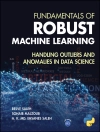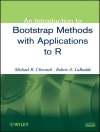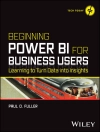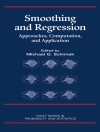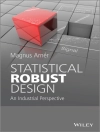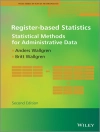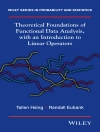This book focuses on computational methods for large-scale statistical inverse problems and provides an introduction to statistical Bayesian and frequentist methodologies. Recent research advances for approximation methods are discussed, along with Kalman filtering methods and optimization-based approaches to solving inverse problems. The aim is to cross-fertilize the perspectives of researchers in the areas of data assimilation, statistics, large-scale optimization, applied and computational mathematics, high performance computing, and cutting-edge applications.
The solution to large-scale inverse problems critically depends on methods to reduce computational cost. Recent research approaches tackle this challenge in a variety of different ways. Many of the computational frameworks highlighted in this book build upon state-of-the-art methods for simulation of the forward problem, such as, fast Partial Differential Equation (PDE) solvers, reduced-order models and emulators of the forward problem, stochastic spectral approximations, and ensemble-based approximations, as well as exploiting the machinery for large-scale deterministic optimization through adjoint and other sensitivity analysis methods.
Key Features:
- Brings together the perspectives of researchers in areas of inverse problems and data assimilation.
- Assesses the current state-of-the-art and identify needs and opportunities for future research.
- Focuses on the computational methods used to analyze and simulate inverse problems.
- Written by leading experts of inverse problems and uncertainty quantification.
Graduate students and researchers working in statistics, mathematics and engineering will benefit from this book.
Mục lục
1 Introduction
1.1 Introduction
1.2 Statistical Methods
1.3 Approximation Methods
1.4 Kalman Filtering
1.5 Optimization
2 A Primer of Frequentist and Bayesian Inference in Inverse Problems
2.1 Introduction
2.2 Prior Information and Parameters: What do you know, and what do you want to know?
2.3 Estimators: What can you do with what you measure?
2.4 Performance of estimators: How well can you do?
2.5 Frequentist performance of Bayes estimators for a BNM
2.6 Summary
Bibliography
3 Subjective Knowledge or Objective Belief? An Oblique Look to Bayesian Methods
3.1 Introduction
3.2 Belief, information and probability
3.3 Bayes’ formula and updating probabilities
3.4 Computed examples involving hypermodels
3.5 Dynamic updating of beliefs
3.6 Discussion
Bibliography
4 Bayesian and Geostatistical Approaches to Inverse Problems
4.1 Introduction
4.2 The Bayesian and Frequentist Approaches
4.3 Prior Distribution
4.4 A Geostatistical Approach
4.5 Concluding
Bibliography
5 Using the Bayesian Framework to Combine Simulations and Physical Observations
for Statistical Inference
5.1 Introduction
5.2 Bayesian Model Formulation
5.3 Application: Cosmic Microwave Background
5.4 Discussion
Bibliography
6 Bayesian Partition Models for Subsurface Characterization
6.1 Introduction
6.2 Model equations and problem setting
6.3 Approximation of the response surface using the Bayesian Partition Model and two-stage
MCMC
6.4 Numerical results
6.5 Conclusions
Bibliography
7 Surrogate and reduced-order modeling: a comparison of approaches for large-scale
statistical inverse problems
7.1 Introduction
7.2 Reducing the computational cost of solving statistical inverse problems
7.3 General formulation
7.4 Model reduction
7.5 Stochastic spectral methods
7.6 Illustrative example
7.7 Conclusions
Bibliography
8 Reduced basis approximation and a posteriori error estimation for parametrized
parabolic PDEs; Application to real-time Bayesian parameter estimation
8.1 Introduction
8.2 Linear Parabolic Equations
8.3 Bayesian Parameter Estimation
8.4 Concluding Remarks
Bibliography
9 Calibration and Uncertainty Analysis for Computer Simulations with Multivariate
Output
9.1 Introduction
9.2 Gaussian Process Models
9.3 Bayesian Model Calibration
9.4 Case Study: Thermal Simulation of Decomposing Foam
9.5 Conclusions
Bibliography
10 Bayesian Calibration of Expensive Multivariate Computer Experiments
10.1 Calibration of computer experiments
10.2 Principal component emulation
10.3 Multivariate calibration
10.4 Summary
Bibliography
11 The Ensemble Kalman Filter and Related Filters
11.1 Introduction
11.2 Model Assumptions
11.3 The Traditional Kalman Filter (KF)
11.4 The Ensemble Kalman Filter (En KF)
11.5 The Randomized Maximum Likelihood Filter (RMLF)
11.6 The Particle Filter (PF)
11.7 Closing Remarks
11.8 Appendix A: Properties of the En KF Algorithm
11.9 Appendix B: Properties of the RMLF Algorithm
Bibliography
12 Using the ensemble Kalman Filter for history matching and uncertainty quantification
of complex reservoir models
12.1 Introduction
12.2 Formulation and solution of the inverse problem
12.3 En KF history matching workflow
12.4 Field Case
12.5 Conclusion
Bibliography
13 Optimal Experimental Design for the Large-Scale Nonlinear Ill-posed Problem of
Impedance Imaging
13.1 Introduction
13.2 Impedance Tomography
13.3 Optimal Experimental Design – Background
13.4 Optimal Experimental Design for Nonlinear Ill-Posed Problems
13.5 Optimization Framework
13.6 Numerical Results
13.7 Discussion and Conclusions
Bibliography
14 Solving Stochastic Inverse Problems: A Sparse Grid Collocation Approach
14.1 Introduction
14.2 Mathematical developments
14.3 Numerical Examples
14.4 Summary
Bibliography
15 Uncertainty analysis for seismic inverse problems: two practical examples
15.1 Introduction
15.2 Traveltime inversion for velocity determination.
15.3 Prestack stratigraphic inversion
15.4 Conclusions
Bibliography
16 Solution of inverse problems using discrete ODE adjoints
16.1 Introduction
16.2 Runge-Kutta Methods
16.3 Adaptive Steps
16.4 Linear Multistep Methods
16.5 Numerical Results
16.6 Application to Data Assimilation
16.7 Conclusions
Bibliography
TBD
Giới thiệu về tác giả
Lorenz Biegler, Carnegie Mellon University, USA.
George Biros, Georgia Institute of Technology, USA.
Omar Ghattas, University of Texas at Austin, USA.
Matthias Heinkenschloss, Rice University, USA.
David Keyes, KAUST and Columbia University, USA.
Bani Mallick, Texas A&M University, USA.
Luis Tenorio, Colorado School of Mines, USA.
Bart van Bloemen Waanders, Sandia National Laboratories, USA.
Karen Wilcox, Massachusetts Institute of Technology, USA.
Youssef Marzouk, Massachusetts Institute of Technology, USA.



